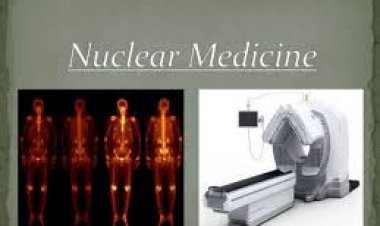1. Nuclear medicine treatment of abnormal tissue.
Nuclear medicine is a form of health care that uses radiation beams to treat abnormal tissues and cells. The term nuclear medicine means that radiation can pass directly through the cells, damaging abnormal cell membranes, and causing changes in their size, shape, and the appearance of their contents. The most common sources of radiation used in medicine are x-rays and gamma rays. In addition, radiofrequency energy (RF; for short, RF) can be used as an alternative source of treatment. Although it has been used for some time, nuclear medicine’s initial development was only in the 1950s. This process can be used to treat certain types of cancer. (Nuclear Energy Research Institute).
2. The first successful nuclear medicine treatment in history occurred on August 4, 1955.
The case concerned was Mary Jane Doe, who had received chemotherapy treatment for cervical cancer, but her tumor was growing quickly, so she went into remission a few weeks after being treated. Unfortunately, during her chemo treatment, the tumor grew again and was now diagnosed with another type of cancer and undergoing chemotherapy as well. Because of this, she became incurable, and her cancer, which she expected to end. She decided to try cancer treatment by using ionizing radiation, one of the most popular sources of medical radiation. This treatment caused the tumor to shrink but was unsuccessful and she died within two months of receiving it. Her death was attributed to her having to undergo high doses of radiation during chemotherapy. When doctors realized that this could not have happened had they been given standard treatments, they decided to try the next best option, a new device called the X-Ray machine, which was used at Columbia University Medical Center in New York City. They believed that these machines could do more than just cause damage to normal tissue, so they opted to start small with 20 x-ray beams and increase the dose to a total of 250 x-ray beams in each session over six years. The results were impressive, and in 1976 Doe became a success story for the field of high-dose, low-dose radiation cancer therapy. As a result, many other hospitals around the world began to use the technology to treat people who were ill with cancer and not just doctors. A breakthrough was made by Dr. Peter Hotez, who created his own company dedicated to research in nuclear medicine. His company is Ion Medicine and Ion Imaging Laboratories (IMIL), which provides high-energy radiation therapy machines and systems. (Nuclear Energy Research Institute).
3. Despite medical advances brought about by nuclear medicine, there are still not enough trained radiologists to make diagnoses reliably during and even after surgery, which requires expertise and training, and makes medical care, particularly radiology, difficult to interpret.
4. In comparison to conventional radiation, nuclear medicine can help treat other diseases in the same way as conventional radiation can.
5. High temperatures used in nuclear medicine create very hot environments that can cause discomfort to humans, although all major studies report no adverse effects.
6. Studies have shown that, in certain cases, nuclear medicine is very effective at treating cancer. Although much has been learned regarding how nuclear medicine may decrease the risk of recurrence in several major cancers, the most recent proof that shows a positive effect is that it does reduce deaths from lung cancer, which is considered the leading cause of death worldwide. There are also many other possible side effects, such as bone marrow toxicity or heart problems, which are possible with any drug, radiation therapy, or a combination of them. Most importantly, however, no long-term side effects have been reported. The side effects seen with other forms of radiation such as x-rays can occur at a relatively lower level, but it is not known how often they occur and how serious they might be. At present, most of the negative side effects are caused by conventional medical radiation but some have been linked to radiation in the laboratory, which is very limited, until recent years when more information on the matter was available. It is known that there are many instances where nuclear medicine may cause other issues that have not yet been linked or seen in clinical trials. These are mainly rare cases that appear and disappear as people learn what their bodies can do and the benefits come out. Until recently, the benefit was seen only when nuclear medicine was combined with other conventional approaches to cancer treatment. For example, radiation has been used by several companies to treat patients with acute myeloid leukemia (AML) which is considered one of the most lethal cancers. Currently, researchers are investigating whether the radiation alone will cure this condition, while chemotherapy will destroy leukemia cells. On September 17, 2015, the European Foundation for Cancer Research (EFRE) released updated positive data about survival rates for AML after conventional radiation and chemotherapy or chemotherapy only. According to the findings, the overall 5-year survival rate increased from 10.9% with conventional radiation and chemotherapy to 12.8% with chemotherapy and chemotherapy only. Additionally, it was found that women aged 55 years and older had a higher rate of surviving without a transplant.
